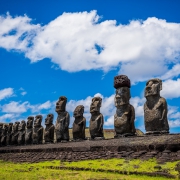Great Leaders Move From Intention to Impact
A powerful intention coalesces our thinking, belief and emotions around the transformation we want to create. It focuses the direction of our efforts and helps chart the way forward.
Intention is a deeply subjective mindset arising out of a personal story, which becomes a platform for change and transformation. Impact, however, happens in the external theatre where our personal story must engage effectively with the reality of the situation.
For that, leaders must learn to watch their intention through the eyes of the world, and in so doing, regulate and shape its expression. Intention and impact must go hand-in-hand; while the former provides a subjective map that helps us go forward, impact provides the objective compass that shapes what we must do in order to fulfil the intention. If it is self-awareness that allows intention to flower, it is situational awareness, or the ability to read reality that regulates intention. The two must never stray away too far from each other.
During a visit to Robben Island, where Mandela spent 18 of his 27 years of imprisonment, I began to understand the significance of this balance. Despite it being summer, it felt chilly as I stood in his old prison cell, pondering over something that he had written as an inmate there: “In my lifetime, I shall walk out into the sunshine, walk with firm feet”. This was when apartheid was at its peak – when the chances of getting out of Robben Island, let alone having a free South Africa, must have been as bleak as the landscape surrounding the prison. The intention was powerful: the “sunshine” evoking freedom, and “firm feet” giving it vehemence. It is, however, the way Mandela created impact that makes for compelling leadership, because so much of it is counter-intuitive.
He had to learn to overcome feelings of resentment and animosity despite decades of brutal apartheid against his people. His own personal loss was monumental. He was allowed one visitor a year for a 30-minute meeting and one letter every six months. His lost his son but was not allowed to attend his funeral. And each day at Robben Island was spent in toiling in the limestone quarry.
But Mandela’s impact compass did not waver, redirecting the anger and pain into the larger purpose of a free nation. He knew that freedom for his people would come only in partnership with the white government. So he began his study of the Afrikaans language to understand the Boers.
In the years that followed, he got to know the wardens well enough to procure books on Boer literature and poetry, and he made it his singular purpose to understand what drove them. Most importantly, he acknowledged that perhaps he too, in similar circumstances would have done what the oppressors had done.
Empathy is always the most difficult pinnacle in the transformation process. Such was his commitment to building a ‘Rainbow Nation’ that several years later, at the ceremony where he was sworn in as the first president of a free republic, the person he chose to stand next to him was his jail warden.
The intention to walk out into the sunshine with firm feet is only one half of the story; the other is about walking backwards from the sunshine into the prison cell. They follow two different trajectories: intention works forwards while impact is visible only when one looks backwards. The journey to impact only happens when leaders master the feat of holding this paradox together. Transformative leaders do two things simultaneously: they see the world through their eyes, and they see their actions through the eyes of the world.







